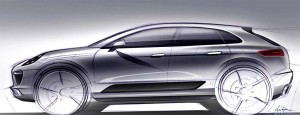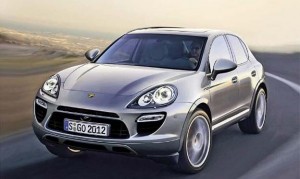Hold that tiger. Porsche has named it new small crossover/SUV the Macan, a name it derived from an Indonesian word for tiger. Set to be the fifth product in the expanding Porsche line-up, it will begin production in 2013.
Macan replaces Cajun, the original codename for the compact crossover. While that might seem odd for Americans who are likely to associate Cajun with New Orleans and Mardi Gras, the Germans had a very different perception – and pronunciation, saying it as “Kay-YOUN.”
Whatever the name, the new model will slot beneath the extremely popular Porsche Cayenne, a product that helped redefine the German sports car maker when it first appeared on the market a decade ago. While it was a stretch, early on, to convince buyers that the Cayenne belonged in the line-up, there should be far less resistance to the Porsche Macan, analysts believe.
“The Macan combines all sports car characteristics with the benefits of a SUV and is a genuine Porsche”, said Bernhard Maier, Executive Vice President Sales and Marketing of Porsche AG. “The name of a new Porsche has to fit with the brand, sound good in very many languages and dialects and evoke positive associations.”
The downsized crossover, which TheDetroitBureau.com previously described as the love child of a 911 and a Cayenne, will be slightly lower and shorter – but wider – than the Audi Q5, which reflects the fact they’ll share key underpinnings, much as the Porsche Cayenne has been a fraternal twin of the Volkswagen Touareg.
Key “hard points,” as industry engineers like to call them, will be shared with the Audi, notably including the firewall, roof pillars and windshield angle. But all sheet metal will be distinct to the Porsche Cajun, along with the larger, wider wheels and tires.
The interior will also be unique to Porsche, with a next-generation Boxster-derived instrument panel, sporty seats and steering wheel, among other touch points.
There’ll be some significant component sharing, however, including the Audi-based chassis, suspension, steering system and Quattro-based all-wheel-drive system. But look for distinctive Porsche touches, including optional carbon-ceramic brakes and a switchable exhaust, as well as the Sport Chrono pack.
There are three powertrains under development, starting with the 3.0-liter V6 that will be shared around the world. It is expected to turn out 290 horsepower and 295 lb-ft of torque. A Cajun Turbo S is also reportedly coming, and will use twin turbos to bump hp to around 350. The third engine, a diesel, may also come to the States, according to various reports.
The new offering will be produced at Porsche’s plant in Leipzig and the maker has already begun to prepare for the launch by investing 500 million Euros, or about $685 million in the plant – which already produces the Cayenne. About 1,000 new jobs will be added to handle production of the new Porsche Macan.


